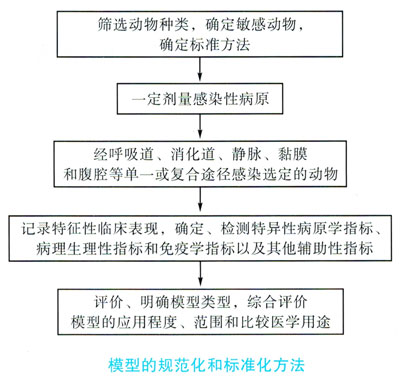
1. Animal preparation
The selection and preparation of animals is the key to the success of the model preparation. For mature pathogenic animal models, the type of animal and the level of microorganisms have been clarified and should be prepared in strict accordance with the requirements of the model. For the preparation of initial, new pathogens, and new animal models, screening experiments such as selection of animal types and grades, determination of infectivity (pathogen attributes, dosage, route, etc.) should be carried out, that is, preliminary experiments. After screening sensitive and stable animals (type, age, sex, etc.), a standardized model is prepared. At the same time, the ethics and welfare principles of laboratory animals should also be met.
2. Pathogen preparation
The activation state and characteristics of the pathogen are the first conditions for the successful model preparation. The standardization of biological characteristics such as standard pathogen strains and local strains must also be completed in advance.
Three, method preparation
Pathogen infection route, dosage, infection environment control and detection methods should be standardized, mature and stable. Methods and technologies that fail to meet the above requirements will affect the consistency of animal models to varying degrees.
Fourth, the preparation of testing indicators
The success of an animal model is mainly reflected in the disease performance and index detection of the model animal. That is to say, for an infectious disease model, the key characteristic indicators of the disease should be determined in advance, especially the clinical manifestations, Determination of pathogenic indexes, pathophysiological indexes, immunological indexes and other auxiliary indexes.
5. Overall model analysis preparation
Through the above-mentioned disease manifestation and index detection, it is clear which type of model the model belongs to, and the application degree and scope of the model are comprehensively evaluated.
VI. Elimination of influencing factors
In every link in the preparation of infectious disease animal models, there will be factors that affect the quality of animal models, such as animal factors, disease causative factors, technical and method factors, environmental factors, and so on. Therefore, it is very important to try to control these influencing factors and achieve the standardization and standardization requirements of the model.
The preparation method of infectious disease animal models is usually to select standardized infectious pathogens, determine a certain dose, infect candidate animals through different routes, observe characteristic clinical manifestations, detect specific pathogenic indicators, pathophysiological indicators, immunological indicators and other Supplementary indicators, evaluation, clarification of model types, comprehensive evaluation of the application degree, scope and comparative medical use of the model, etc. are summarized in Figure 7-1.
